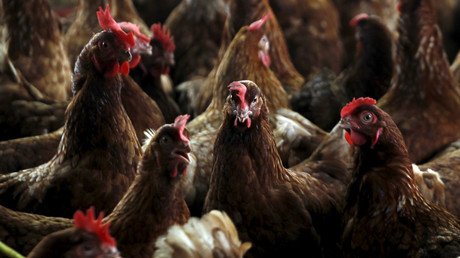Antibiotic-resistant bugs in British supermarket chicken reach record levels

A food poisoning bug found in three-quarters of British supermarket chicken is showing drastically increased resistance to antibiotics, which may mean it will become harder for doctors to treat.
The Food Standards Agency (FSA) tested campylobacter bacteria found in poultry. It said resistance to certain antibiotics, including a commonly used drug to treat the bug, ciprofloxacin, had more than doubled in some strains.
It also found a big increase in resistance to the antibiotic nalidixic acid, with more than half of two common strains, C.jejuni and C.Coli, found to be resistant to the drug.
Both antibiotics are classed as “critically important,” which means a drug is the only option or one of very few alternatives for treating human illnesses.
Across the 283 samples tested by the FSA, 5 percent had developed resistance to multiple drugs.
The FSA noted that 900 million chickens are produced in the UK every year, which means millions could be carrying multi-resistant-bacteria.
According to The Bureau of Investigative Journalism (TBIJ), campylobacter is responsible for half a million infections, 100 deaths and 80,000 GP consultations every year, costing a total of £900 million (US$1.17 billion).
Professor Tim Lang from City University’s Centre for Food Policy says increasing drug resistance could lead to more deaths.
How many deaths will we accept, asks @ProfTimLang, responding to drastic #superbug rise in supermarket chicken https://t.co/GY0mOJQNEapic.twitter.com/zcLMupo0R5
— The Bureau (@TBIJ) September 27, 2016
“This is deeply worrying and poses gross pressures on the NHS [National Health Service],” he told TBIJ.
“We’re passively accepting 100 deaths a year, will we accept 1,000 or 10,000? What I fear is the normalization of antimicrobial resistance related deaths.”
TBIJ says one of the key drivers to antibiotic resistance is the use of drugs within industrial farming.
It says its investigation earlier this year uncovered UK poultry farmers are using significant quantities of antibiotics despite the fact it was fueling the rise of resistant campylobacter.













